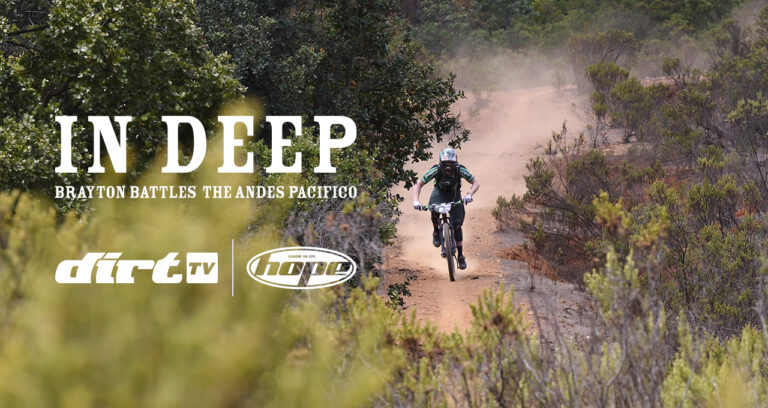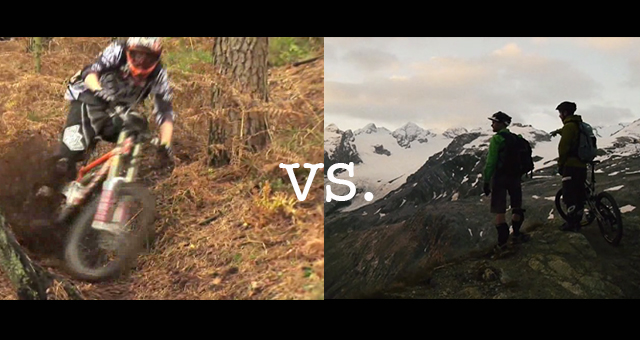
SHOULD I BE CONSIDERING A PLASTIC BIKE?
Don’t be fooled by the luxury impression about carbon because largely it depends on the construction, for many bikes still feel and behave like cheap plastic bikes. Still carbon vs aluminium is valid question. In terms of the frame/chassis, whilst carbon is overpriced it is seen to add value in terms of weight loss and looks. Lightweight is a good thing as long as strength is not compromised.
Aluminium, less of a smooth operator but still has a lot going for it although the raw material is now commanding high prices. The fact is I’ve broken several carbon bikes in the past twelve months and suggest caution to many who are in the market for such bikes. Some are of immense integrity, others weak of muscle where needed, this is largely down to manufacturer experience and knowledge. Some are plainly still guessing. If you’re a bruiser on 160–200mm I’d advise on aluminium simply because its less catastrophic when it fails and less prone to stone chips.
And even though weight might be your deciding factor, just remember ali’ can still be light if built light – there are many sub 30lb 160mm bikes and a couple of sub 35lb 200mm. Remember many carbon bikes are actually only carbon front ends.
And wheels? In trail bike circles whereas carbon frame/carbon wheels are great, consider the carbon wheel–only option before splashing out on a carbon frame because it’s the wheels that will get you faster – this is especially true on 29” wheels. On 160mm bikes many racers have opted for aluminium rear wheels because of the fragility of carbon in rock situations.
EUROPEAN DIRECT SALESLike it or not companies such as Canyon and YT Industries (that sell directly, cutting out the middle man/shop) offer truly incredible bikes at the right price. The YT’s Tues downhill bike and Canyon’s Spectral are two examples of bikes with great integrity. Yet they are but two bikes in an industry offering angles, colours and specifications in a sea of variations and last season discounts.
SHALL I DITCH MY 26” BIKE?If you’re in the market for a new bike then yes do it while it’s still worth some money… if you want to keep it for posterity or memories then obviously not. Likewise if you’re happy with your horse and have a heavy streak of Luddite in you then you will have already made your mind up.
But what if you want to take advantage of those small benefits that bigger wheels offer? What if you believe in better? What wheel size shall I get? Basically get the correct bike before the wheel size, and make sure you’ve asked all the correct questions including where and what you ride before you choose the wheel size.
Some of our favourite bikes this year are 29” – they include the 138mm Specialized Stumpy Evo, the 140mm Intense Carbine, the Enduro World Series winning 140mm Trek Remedy, the 150mm BMC Trailfox and the incomparable 155mm Specialized S–Works Enduro. These bikes are the absolute cream of big wheels. For all year round riding I’d go 29” without any doubt whatsoever – offering grip and traction for that six months of the year where small wheels get sucked into a battle with the ground.
If you only ride in the Alps or Liguria then consider the 27.5” for they will take more punishment. Similarly back in this country if you’re riding is on 160mm but really you’re smashing out downhill runs most of the time. This is where tyres come into play because at the minute there are few offerings in soft compound dry weather grip for the 29 brigade. Don’t underestimate the control and confidence that a Maxxis ‘Super Tacky’ or Schwalbe ‘Vert Star’ offers. Also if you cannot go the distance money wise for strong 29 wheels then a 27.5 will be better for you.
Very simply, if you’re in the market for a trail bike consider 140mm x 29”, a big hitting gravity weighted 160mm then have a look at the Kona Process in 27.5” or even the super light Scott Genius LT. And for downhill? If you can bare the flack from belligerent/set–in–their–ways DH racers then also head 27.5” with bikes such as the Intense 951 and Solid Strike.
SHOULD I BE A POACHER OR A SHARER, A GIVER OR A TAKER?An issue of global importance, but of local sensitivity. If you choose to poach tracks consider that local riders and builders share localities with locals and (legal or illegal) the landowners. They have relationships built on trust – some riders honour the ‘no weekend uplift’ rule when the local residents want some peace and quiet. There’s the neighbourhood scene to consider – how much do you put back into your local trails?
There’s the national scene – should I really be tramping into someone else’s backyard without even asking? I’ve witnessed no end of rude, obnoxious, clueless twats on my tracks this summer – to them I say ‘f–k you’ – not because of riding the tracks, but simply because I’ve seen no end of them ride past me in big gangs without even a polite ‘hello’ to the person raking out a corner.
And if you do poach have some respect, not only for the builder but the trail too. In the US there is far much more trail respect in terms of no corner cutting or ramp building, etc.
If you are local and ride local tracks offer a hand in summer maintenance, better still add to the network with your own ideas. Just remember once your track is made it’s out there for all to enjoy. For takers of the world consider the locals have relationships built with residents that operate 365 days of the year not just a selfish weekend away.>>





